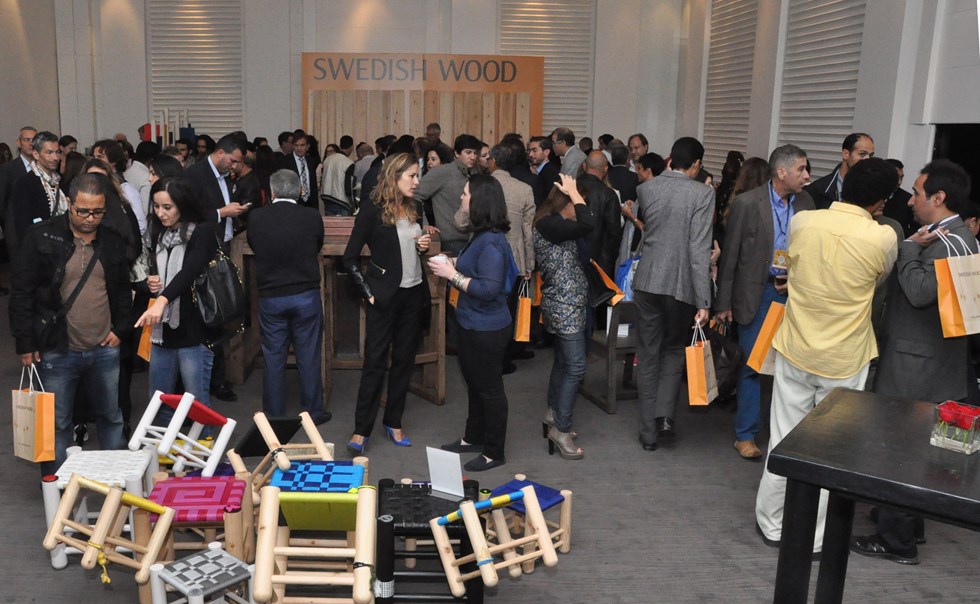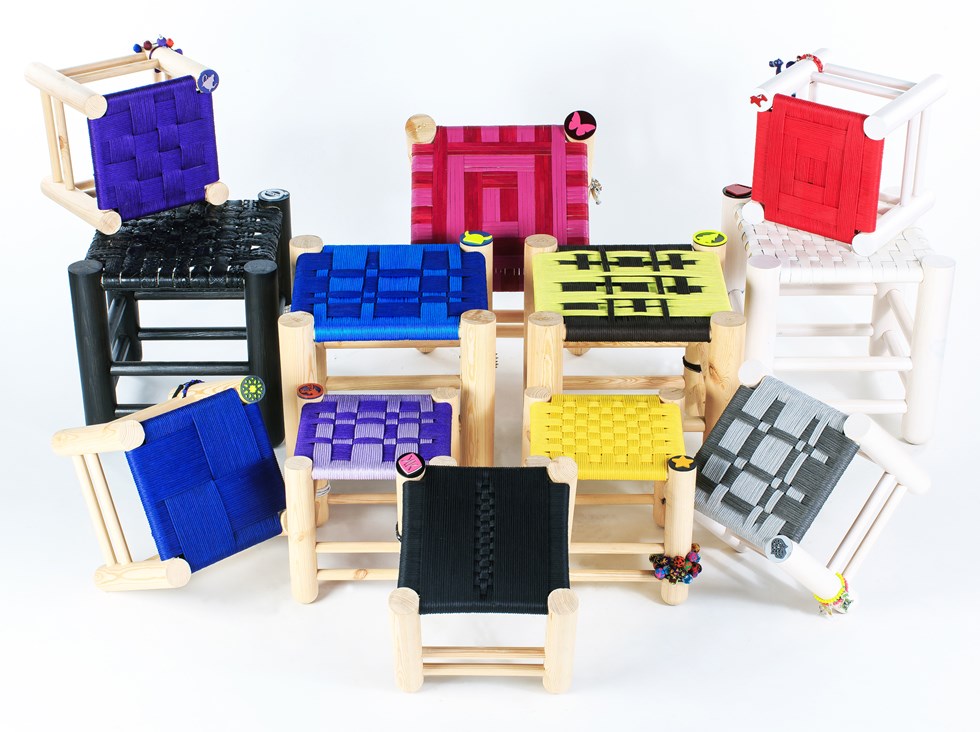The exhibition “Swedish wood meets Moroccan creativity and woodworking tradition” was a much appreciated element of the conference.
On 4 November, Swedish Wood arranged a conference in Casablanca for designers, architects and other professionals in the woodworking industry. Possibilities for Swedish wood in Moroccan interior design and architecture were the main theme.
“We mainly wanted to provide inspiration to accentuate the wood surface of our Swedish pine in interior design and also show the possibilities of laminated timber designs,” says Jan Söderlind, International Director at Swedish Wood.
The conference attracted just over 200 participants. A much appreciated element was an exhibition of furniture that was created by ten selected Moroccan designers on the theme “Swedish wood meets Moroccan creativity and woodworking tradition”. It was so successful that it is now being taken further as a touring exhibition.
“There is great deal of curiosity about our varieties of wood and, thanks to the long tradition of using wood in Morocco, there is also fundamental expertise in the material. This meant that we had good starting points to conduct discussions surrounding the wood’s possibilities.”
Swedish exports of sawn timber to Morocco amount to around 400,000 m3 annually and mainly consist of pine. This corresponds to around half of Morocco’s imports of softwood, which makes Sweden a leading import country.
In Morocco, the main areas of use for Swedish wood have long been the manufacture of joinery products, such as furniture, kitchen fittings, windows and doors. One example is the Moroccan sofa, a built-in piece of furniture that covers three walls and is in almost every home. Wood is often used in the furniture’s bearing structures.
“In Morocco like many other markets, we see wood competing with other materials like fibre board, PVC plastic and aluminium. Therefore, it’s important for us to inform about the advantages of Swedish wood, in order to retain and, on the long term, increase the material’s market share,” says Jan Söderlind.
Using wood as a structural material in larger constructions is still uncommon in Morocco, but a break in the trend may be on the way as tourist facilities are beginning to be built of wood and the demand for laminated wood grows.
“Morocco is a country with a young population and a growing middle class, which means that demand will change over the next few years. Of course, we want the trend of choosing renewable materials to grow ever stronger.”
Morocco has a population of 33 million, with an average age of just 28 years.
For further information:
Jan Söderlind, International Director
+46 (0)70-211 04 22
jan.soderlind@svenskttra.se
Press contact:
Charlotte Apelgren, Director Interior and Design
+46 (0)70-661 7881
charlotte.apelgren@svenskttra.se
Jan Söderlind, International Director
+46 (0)70-211 04 22
jan.soderlind@svenskttra.se
Press contact:
Charlotte Apelgren, Director Interior and Design
+46 (0)70-661 7881
charlotte.apelgren@svenskttra.se


 The exhibition “Swedish wood meets Moroccan creativity and woodworking tradition” was a much appreciated element of the conference.
The exhibition “Swedish wood meets Moroccan creativity and woodworking tradition” was a much appreciated element of the conference.